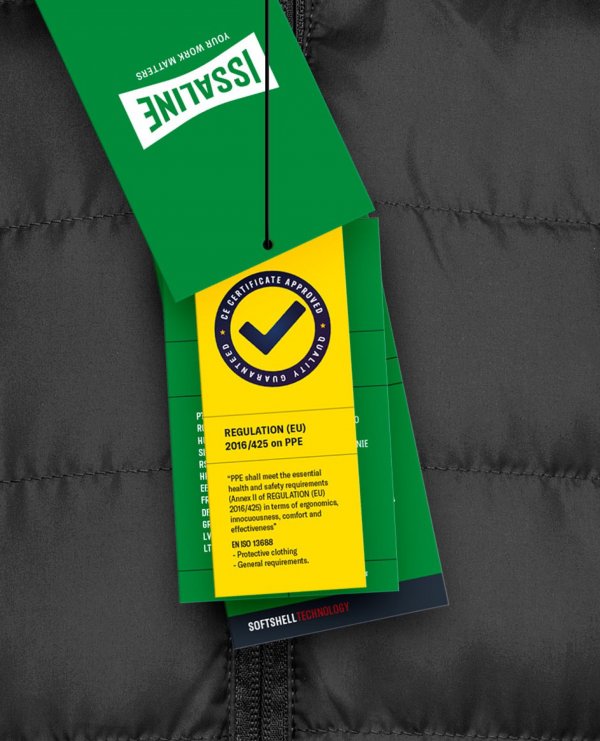WE AUDIT OUR ‘TODAY’ TO IMPROVE OUR ‘TOMORROW’
We have a conformity assessment system for protective clothing certified as PPE in "CAT. I".
60 years of experience in the workwear and PPE market always at the customer's service.
PPE CAT. 1 comply with the requirements of the EN ISO 13688 standard.
Moreover, ISSALINE´s garments have been subjected to accredited laboratory tests "Lab. Accredia" to verify the following features:
- Dimensional variations when washing and drying (UNI EN ISO 5077)
- Tear strength of trouser-type textile specimens (UNI EN ISO 13937-2)
- Resistance to perforation with the sphere method (UNI 5421)
- Resistance to abrasion of protective clothing materials (UNI EN 530)
- Size designation (UNI EN ISO 13688)
- Comfort and Design (UNI EN ISO 13688)
- Ph of the aqueous extract (UNI EN ISO 3071)
- Aromatic amines derived from azo dyes (UNI EN ISO 14362.1)
- Nickel release (UNI EN 1811)
- Protection against cold environments down to -5ºC. (UNI EN 14058)

WITH THIS YELLOW LABEL...
All our products marked CE CAT. 1, are accompanied by a yellow card with the number of the TEST REPORT (RdP) relating to the fabric or product, have a technical file and can therefore be declared PERSONAL PROTECTIVE DEVICES (PPE) of the 1st Category (Cat.1).
Products that have not undergone this qualitative and documentary process ARE NOT PPE, but simple generic clothing.
In the workplace, PPE must be used.
CATEGORY I
Minimal risks where the user can determine on its own the degree of effectiveness the PPE holds against said risk.
The following risks are the ones considered:
-
Mechanical injuries that only lead to superficial effects.
-
Contact with weak-acting cleaning materials or prolonged contact with water.
-
Handling of hot agents or contact with surfaces that do not exceed 50º.
-
Eye injuries acquired from sunlight.
-
Adverse weather conditions, excluding extreme conditions.
CATEGORY II
Risks other than those mentioned in categories I and III are included.
CATEGORY III
Fatal risks or those that could have serious and irreversible consequences for the health of the user.
The following risks are exclusively considered:
- Irritant, toxic or dangerous substances, gases, aerosols ...
- Atmospheres with a lack of oxygen.
- Biological agents that can cause disease or infection.
- Ionizing radiation.
- Environments with high temperatures whose effects are comparable to those of an air temperature of at least 100 ºC.
- Low temperature environments whose effects are comparable to those of an air temperature of -50 ºC or less.
- Falls from certain heights.
- Electrical hazards and high voltage.
- Drowning.
- Cuts by hand-operated chain saws.
- High pressure jets.
- Gunshot or stab wounds.
- Harmful noise.
















